1. Indian

With over 500 languages and 6,000 dialects, the diverse cultures and religions of India shape today’s wedding ceremonies, and so Indian weddings vary based on their region of origin. Many different rituals that are part of an Indian wedding ceremony also can take place over several days. The traditional Indian wedding itself is a ritual of three separate events: the Sangeet and Mehendi, the ceremony, and the reception celebration.” Indian brides and grooms instead wear bright, vibrant colors and are usually decked out in gold jewelry. Jewelry will also adorn a bride’s head and face. Henna is also very popular for brides. On their wedding day, many Indian brides wears a traditional red sari, since red represents happiness and good luck. The traditional red sari is a six-foot fabric draped and adorned with crystals and real 24-karat gold thread. White is avoided since it’s a color reserved for mourning. Then the bride will change into a different sari for the reception. Indian brides typically mix red or pink with gold. Their wedding garment is called a Lehenga, which is a long skirt with a matching top and scarf. After the ceremony, they also change into a different Lehenga.
2. Japanese

In Japan, there are four main styles of wedding: Shinto, Christian, Buddhist, or non-religious. Many brides have been impacted by western culture and so now choose to wear white gowns and hold weddings in a Christian church even if they are not Christian themselves. Instead of vows, the bride and groom drink sake, three times each from three different cups called sakazuki. Next, their parents take sips, which represents sealing the bond between the two families. Each person takes three sips of each of the cups- with all of the sips having a unique meaning. The first three represent the three couples, the second three sips represent hatred, passion, and ignorance (stay with me here) and the last three sips represent freedom from those three flaws. The term san san ku do means three, three and nine and the “do” is the part that means the deliverance from the flaws. Nine is a lucky number in Japanese culture. On her wedding day, a Japanese bride celebrating a traditional Shinto ceremony wears white from head to toe, including makeup, kimono, and a hood called a "tsunokakushi." White denotes her maiden status, and the hood hides the so-called "horns of jealousy" she feels towards her mother-in-law.
3. Thai

It has become common for modern couples in Thailand to wear the typical western style white dress and suit, the Thai classic attire is still widely used. The traditional bridal dress can vary a bit. These include: Chong kraben, sinh, Sabai, Suea pat, or raj pattern. The men will usually wear the Thai traditional pants but will sometimes switch out the traditional Thai top for a western style suit jacket and tie, though usually still made from silk. Traditionally, the bride and groom wear garlands round their neck and kneel and wai whilst the elder says a few words and anoints them on the forehead. A conch shell (known in Thtai as ‘sang’) is filled with holy water and is used by each guest to gently pour over the hands of the newly-weds (‘rod nam’ means to soak with water).
4. Chinese

In China, brides typically walk down the aisle in a slim-fitting, embroidered dress, called a traditional qipao or cheongsam. For the reception, they typically change into a more decked-out gown with Western flair. But the bridal fashion show doesn't end there. To cap the night, Chinese brides often make a final change into a cocktail dress. Red, corresponding with fire, symbolizes good fortune and joy. Red is found everywhere during Chinese New Year and other holiday celebrations and family gatherings. A red envelope is a monetary gift which is given in Chinese society during holiday or special occasions. The red color of the packet symbolizes good luck. Red is even strictly forbidden at funerals as it is a traditionally symbolic color of happiness.
5. Vietnamese

During the wedding ceremony, the couple kneels and prays in front of the bride’s family asking for permission and approval from the bride’s ancestors. If you are lucky enough to attend a Vietnamese wedding, make sure to come on an empty stomach – the wedding dinner is known to have six to 10 courses. Just like in Chinese culture, red is a symbol of luck and is used in most Vietnamese celebrations. It is used as a lucky color for wrapping gifts, including red envelopes. Red is considered a lucky color because demons and evil spirits of legends were believed to be afraid of the color red.
6. Turkish

In Ottoman tradition women generally dressed plainly, it was considered improper for them to wear showy clothing made of fabric with silver or gold thread, sequins or embroidery until they were married. The wedding dress was therefore the first richly ornamented attire they wore. It was distinguished from the costume of other women at the ceremony by a bridal headdress, veil and other accessories. Ottoman wedding dresses made of rich fabrics in the fashionable style of the time were in bright colors like red, purple, blue or pink, while red was the traditional color for the daughters and sisters of the sultans. They were worn with a red bridal veil. From the 1870s onwards, under western influence, wedding dresses of pastel colors became fashionable, but the first white wedding dress was not worn until 1898, when Naime Sultan, the daughter of Sultan Abdülhamid II, married Kemalettin Pasa. This fashion, which began at the palace, gradually spread throughout Turkish society.
7. Spanish

An old traditional Spanish wedding custom is for the bride to wear a black wedding gown which for a Catholic bride meant that she was committed to her marriage till death due them part. We also knew we wanted to incorporate a mantilla and peineta which are a floor length veil and large ornate comb for a really stunning and different beauty look. According to a unique custom of Spanish weddings, the groom presents thirteen Arras or gold coins to the bride in a special box. These coins are blessed from the priest that represents Jesus and the twelve Apostles. The groom exchanges these coins that symbolizes his commitment towards his bride and a promise to support her financially as well as in other terms. Later on, these coins are preserved as family heritage.
8. Nigerian
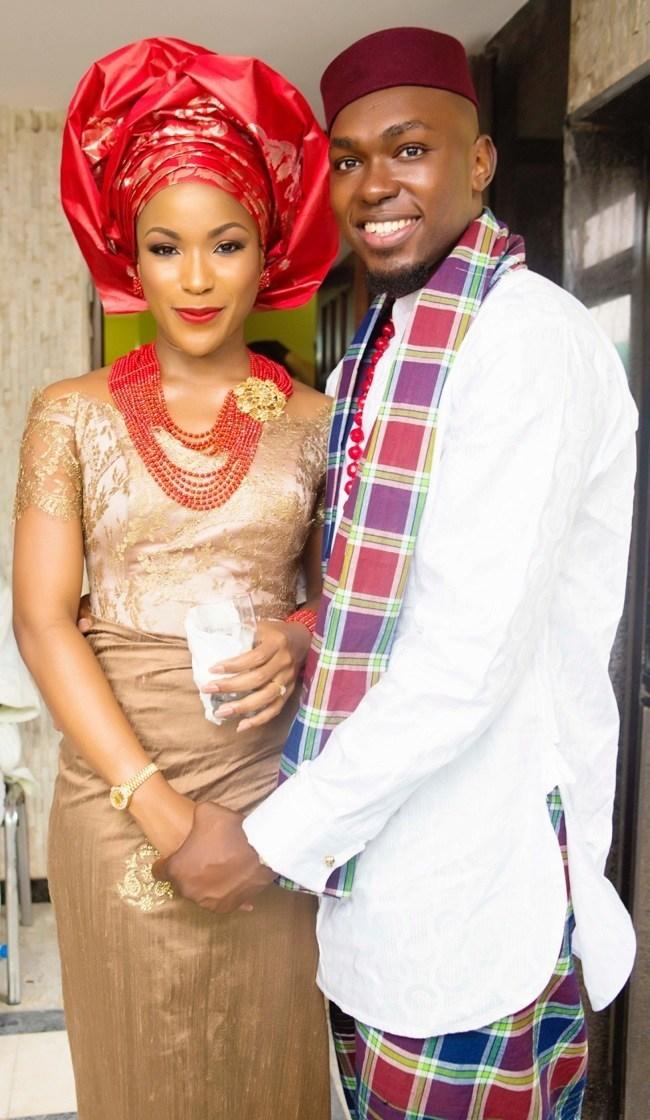
In many Nigerian weddings, the couples attempt to enjoy both the “Western” culture as well as their own culture by wearing the white dress for the ceremony and traditional Nigerian attire for the reception. Traditionally, the bride will wear a headwrap called a gele. Aso-Ebi means “Family Clothes” in Yoruba, a Nigerian language. This is when family members of the couple, decide to wear identical colors and fabrics at an event to identify themselves. So at a Nigerian wedding you could differentiate the bride’s family from the groom’s family based on the colors and fabrics they’re wearing. However it is also very common to see friends of the bride show up in aso-ebi too. Nigeria has always been a culture of celebration, and famously so. In the case of weddings, this has meant huge, extravagant parties lasting till the wee hours, with open invitations and over-the-top decor. Modern young couples often opt for both a more traditional cultural wedding on top of a separate religious ceremony – and when the bride and groom come from two different tribes, even more layers of rejoicing (and complications) are added.
9. Ghana

10. Scottish

Historical attire for a Scottish bride would include the Grooms tartan plaid of his families clan fastened with a brooche. The original Scottish wedding dress is called an "Arisaid." Today's Scottish bride usually wears a long, white wedding gown similar to those worn throughout Europe and the U.S. There are a couple of differences in that these traditional Scottish wedding dresses tend to have more modest décolletage than those that many U.S. brides now wear, often with sleeves. This may be due to a difference in cultures, or it may be due to the chilly Scotland air, or both. Scottish brides also tend to wear shorter trains than their U.S. counterparts, and no veils.Perhaps the most beautiful and memorable Scottish wedding gown is that which combines the best of old and new traditions. One of the prettiest styles is that in which the bride wears a tartan corset over her white wedding gown.
11. Norwegian
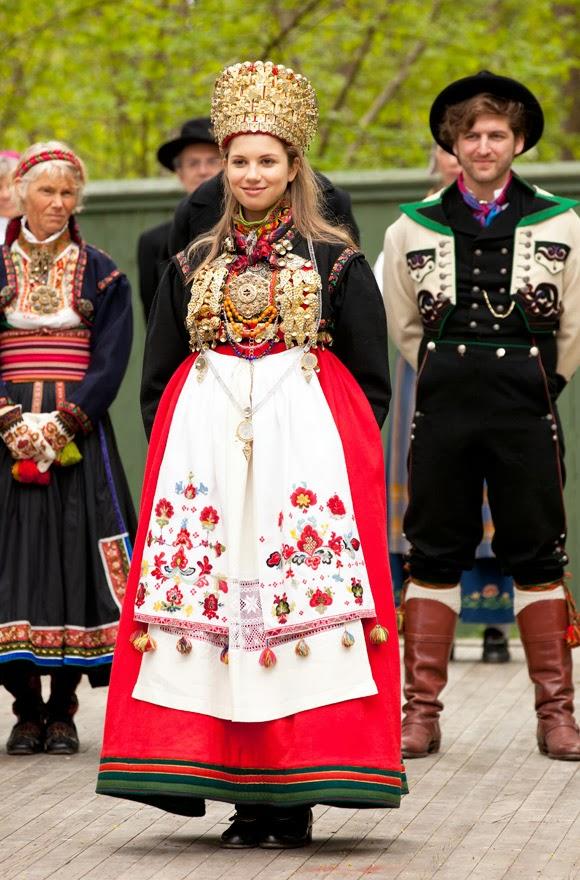
In Norway, the bride wears a handmade and embroidered ‘bunad’ which is the traditional gown worn as a wedding dress. It is often worn with scarves, shawls and gold or silver jewelry. The special feature of the attire is the gold or silver crown worn by the bride. The bride generally wears a white or silver gown, which is called a brudekjole. With it, she wears a gold or silver crown (or krone), which has small spoon-shaped bangles hanging from it. It is believed that the sound made from the bangles keeps evil spirits away.
12. Peruvian

Traditional Peruvian wedding clothing is bright and vibrant with geometric designs that have been worn for over a thousand years. Women wear many layers of colorful skirts and men wear ponchos and sandals. In between layers of the wedding cake, there are ribbons with charms attached at the end. Before the cake is cut, single girls and women grab a ribbon and pull. The one who pulls out the ribbon with a fake wedding ring is believed to be the next to get married. Peruvian weddings are traditionally packed with music, dancing and vibrant, colors.
13. Hungarian

Nowadays Hungarian brides wear a white wedding dress. In the past traditional wedding dresses were very colourful and included lots of embroidery. Three bright and vibrant colors were usually repeated in the bride's dress and in her large and elaborate headdress, which also included woven wheat as a symbol of fertility. Under the dress were many layers of underskirts. Along the way the bride would be repeatedly toasted and wished well, and it was not uncommon for the bride to be kidnapped by a group of cheerful men or women and for the groom to have to rescue his bride before the ceremony. When the bride reached the groom's home, the groom's parents would greet her with a glass of wine. She would traditionally toss the glass over her shoulder and allow it to break.
14. Kazakhstani

A Kazakh bride traditionally wears red wedding dress. But nowadays many of them wear western style white dress. The women wear mostly a white wedding dress and the most important piece in a bride’s outfit is a ‘sukele’, a conical hat attached to an elegant white colored veil. The sukele is the most expensive part of the dress is prepared long, long before the age of the girl’s marriage. The couple must also get married in the state office. This ceremony is known as the "Ahazh". In Kazakh cities the couple and their guests then get in cars and go to some of city sights where the wedding pictures are taken. The wedding reception includes up to 300 guests. All the costs of the reception are paid by the groom's family. The day after the wedding the groom's family organizes a "kelin" tea ceremony. The bride serves tea to every person present there.
15. Ethiopian

Two-thirds of Ethiopian population is Christian. The rest of its people are Muslim. So, religious weddings in Ethiopia are either Christian or Muslim. For the wedding ceremony, most Ethiopian brides prefer to wear a white wedding gown with maybe a few traditional Ethiopian touches, while the groom wears a suit. Ethiopian weddings last for three days. It may sound unusual but in Ethiopia the engagement happens during the wedding reception which occurs on the first day of wedding festivities. In this ceremony the couple cuts the cake and rings are exchanged. There is some champagne too. A bride also throws candies to the people present at the reception.. The couple, however, wears traditional outfits for the Meles and Kelekel ceremonies, which are held on the second and third day of the wedding ceremonies. During Meles, the newlyweds dress up in a traditional outfit called the Kaba and go to the venue where their parents are holding the event. During this event, the family goes through the traditional bread-cutting program. After cutting the bread, the mother of the bride gives her daughter a nickname that everyone will use in memory of the wedding. The wedding festivities end on the third day. A special event for all those who were not able to arrive at the wedding is held. This event is called "kelekel". The bride's and groom's parents bless their children. Now they are able to start their new life together.
16. Malay
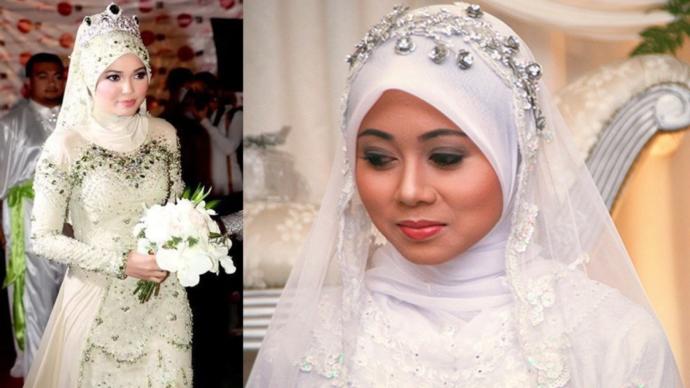
The Malay are Malaysia's largest ethnic group, accounting for more than 1/2 the population and the national language, but the country consists of a wealth of cultures, including Indian, Chinese and Portuguese. The customs of a Malay wedding ceremony reflect that diversity. It is Malay tradition to have a lot of guests at the wedding. If the ceremony takes place in a village, the whole village is invited. The more the merrier is one of the most important concepts at a Malay wedding. It is appropriate for women guests to wear a long-sleeved dress, and many women do cover their head. The bride's palms and feet are decorated using dye from henna leaves to signify fertility and love. The groom's hands are decorated, too. The wedding dress is incomplete unless the bride wears a beautiful crown, which is placed on the top of the shawl to represent the importance of the day.
17. Indonesian

For most Indonesians weddings, formal, traditional wear is recommended. Indonesians love a reason to dress up, so anticipate some awesomely-attired attendees, and an even more opulent-looking bride and groom. Brides tend to wear all sorts of styles and colors. Most women will don Indonesian kebayas and sarongs and styles from any region are acceptable. Women are not required to cover their hair. While it is generally advised to come with your shoulders and upper legs covered, you can play it by ear depending on the family and the style of the occasion.
The Javanese are an ethnic majority in Indonesia – 56 percent of Indonesia's population -- they celebrate weddings for three days. The three-day celebration starts with the Siraman, a beautiful and touching ceremony where the bride and groom's parents shower them with a water-and flower-based concoction. This symbolizes the last time they are bathed by their parents, and serves as a reminder of how they were cared for. After the Siraman, the bride is dressed as a princess and assigned to a room, where she is accompanied by female relatives – sometimes including those from the groom's side – for the entire night. Meanwhile, the groom will wait outside her home, symbolising that he will be a patient husband throughout their marriage. Normally, the Siraman is reserved for the family. Day two is when the civil wedding occurs, and when all guests join in. In line with the couple's religion, an official will legalize the marriage as they sign their wedding documents. After the paperwork, the couple performs a series of rituals, including throwing betel nut leaves at each other to ward off evil spirits. Finally, they seek blessings from their parents and elders. Usually, this is followed by a reception, as the couple should eat together for the first time as a married couple. Guests are invited to eat at this point.
18. Afghani

During the day, the bride starts out wearing green clothes, and the Nikah (religious ceremony) takes place during the day while the bride wears green. After the Nikah, the bride wears white clothes and the groom wears a suit.
19. United States
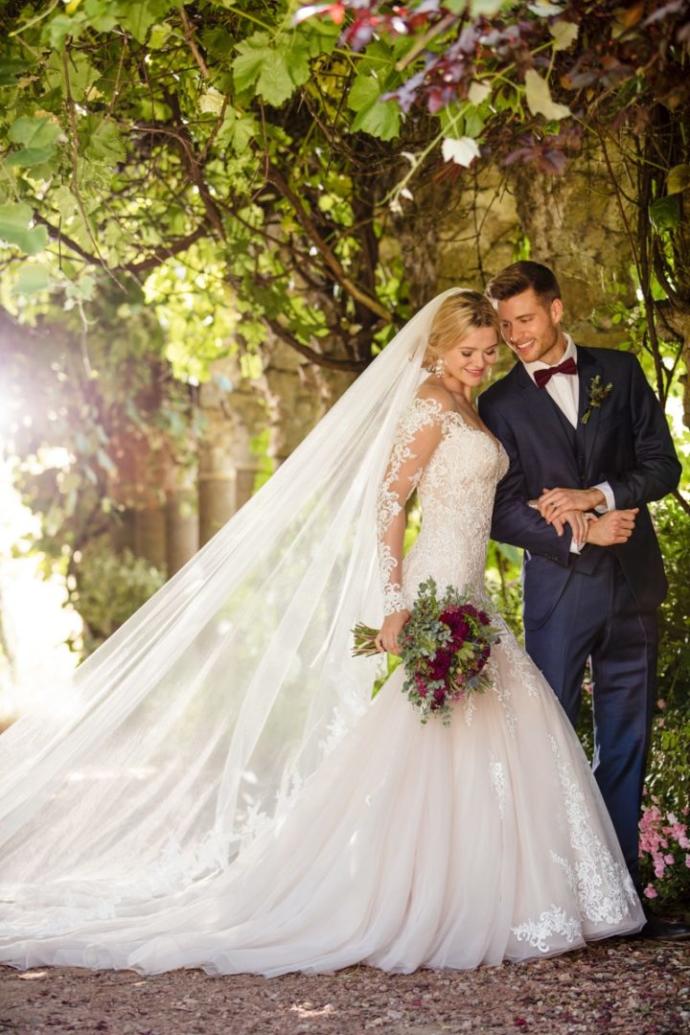
Most weddings in the United States traditionally follow the white wedding type which originates from the white color of the bride's wedding dress. Before Queen Victoria popularized white wedding dresses, brides wore the nicest dress they already had because it was difficult to keep white dresses staying white. Thanks to Queen Victoria, white became popular because it showed off peoples wealth. Today, white wedding dresses are still popular but are slowly falling out of popularity. Still, a lot of brides like to have a train and a veil. Customs and traditions vary on family traditions and tastes of the bride and groom. If dancing is offered, the newlyweds dance first together briefly. In the mid-twentieth century it became common for a bride to toss her bouquet over her shoulder to the assembled unmarried women during the reception. The woman who catches it, superstition has it, will be the next to marry. In a similar process, her groom tosses the bride's garter to the unmarried men, followed by the man who caught the garter placing it on the leg of the woman who caught the bouquet. In a symbolic cutting of the wedding cake, the couple may jointly hold a cake knife and cut the first pieces of the wedding cake, which they feed to each other. Sometimes they may deliberately smear cake on each other's faces, which is considered vulgar elsewhere.
20. Kenyan
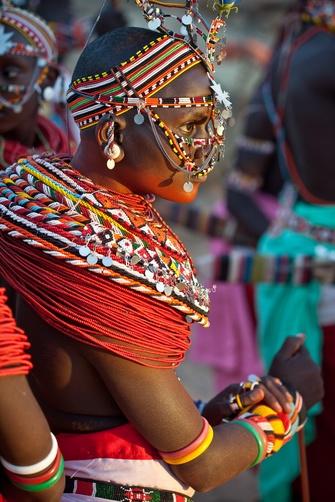
In general, the traditional dress of Kenya has lots of variants, because almost every tribe has their own idea how the national attire should look. Still, Kenyan national clothing is very bright, colored and heavily decorated. For example, members of the Samburu tribe cross wooden sticks during the wedding ceremony, this symbolizes that a marriage will grow deep, have lasting roots, and maintain the strength and natural life force of trees. Like the Maasai tribe, they wear shukas and impressive jewels with beaded necklaces, elaborate headdresses, and tons of brightly colored bracelets. To add glamor to that, their faces are painted red with red ochre and they wear headdresses of a striking set of brightly colored feathers.
 Holidays
Holidays  Girl's Behavior
Girl's Behavior  Guy's Behavior
Guy's Behavior  Flirting
Flirting  Dating
Dating  Relationships
Relationships  Fashion & Beauty
Fashion & Beauty  Health & Fitness
Health & Fitness  Marriage & Weddings
Marriage & Weddings  Shopping & Gifts
Shopping & Gifts  Technology & Internet
Technology & Internet  Break Up & Divorce
Break Up & Divorce  Education & Career
Education & Career  Entertainment & Arts
Entertainment & Arts  Family & Friends
Family & Friends  Food & Beverage
Food & Beverage  Hobbies & Leisure
Hobbies & Leisure  Other
Other  Religion & Spirituality
Religion & Spirituality  Society & Politics
Society & Politics  Sports
Sports  Travel
Travel  Trending & News
Trending & News 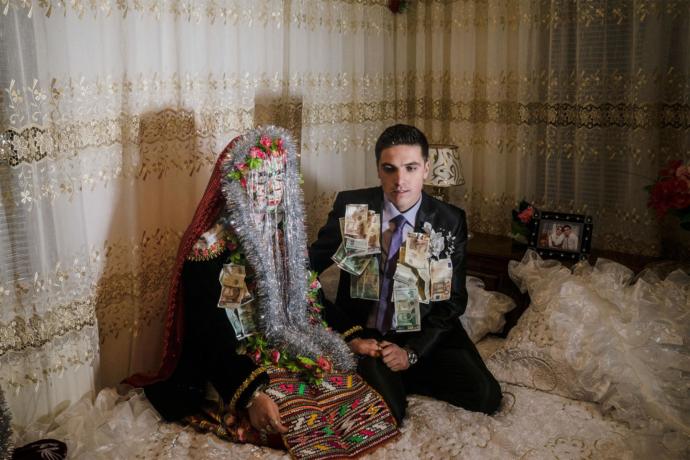

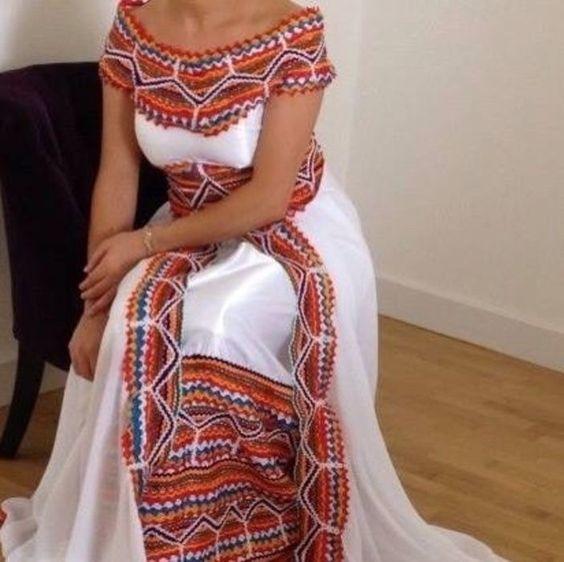
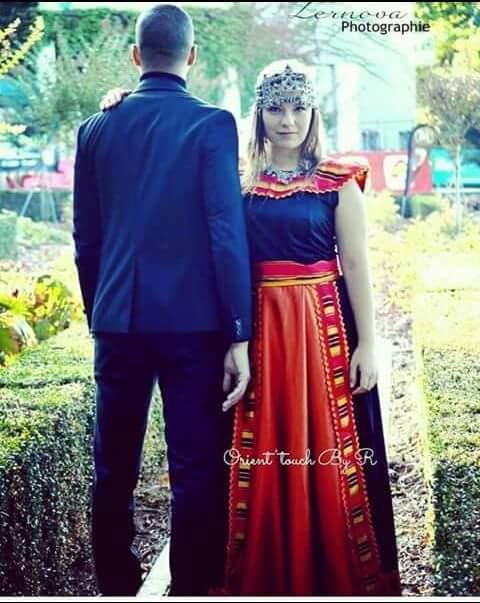
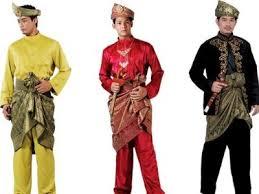



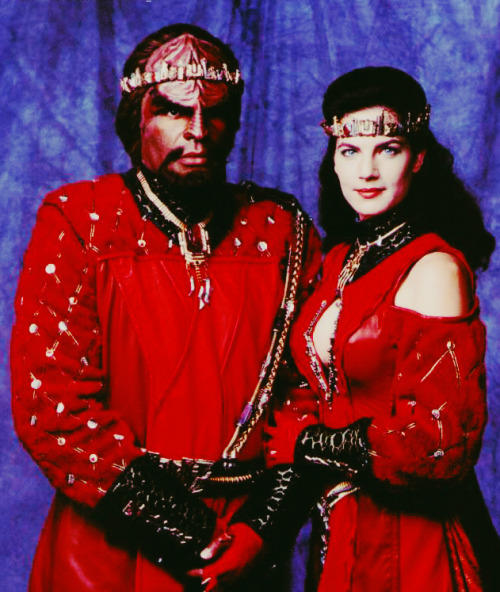

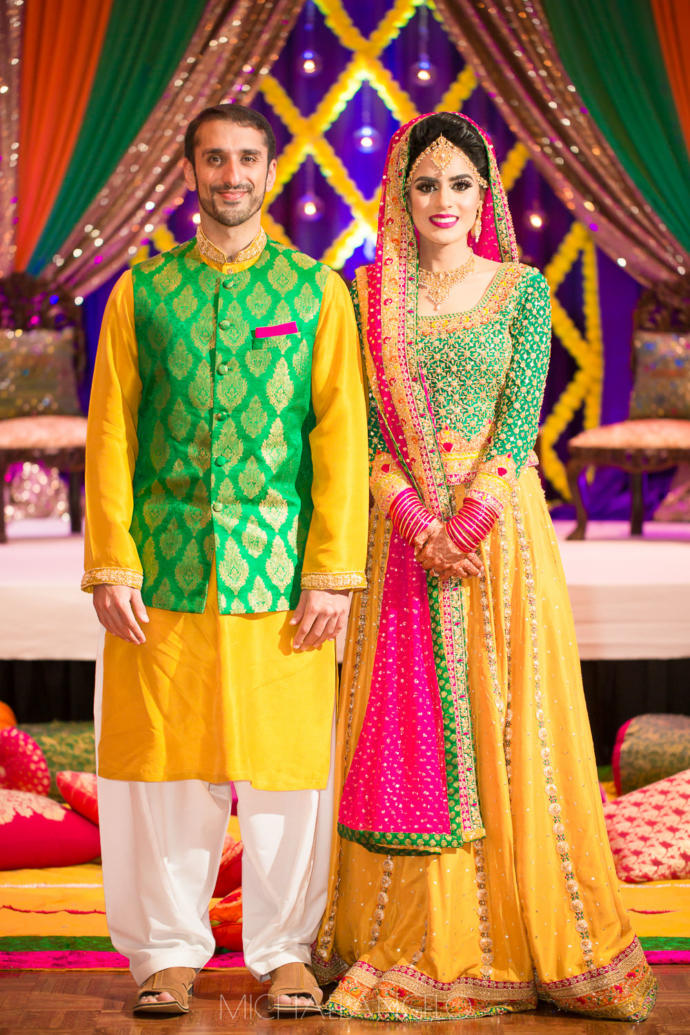
Most Helpful Opinions